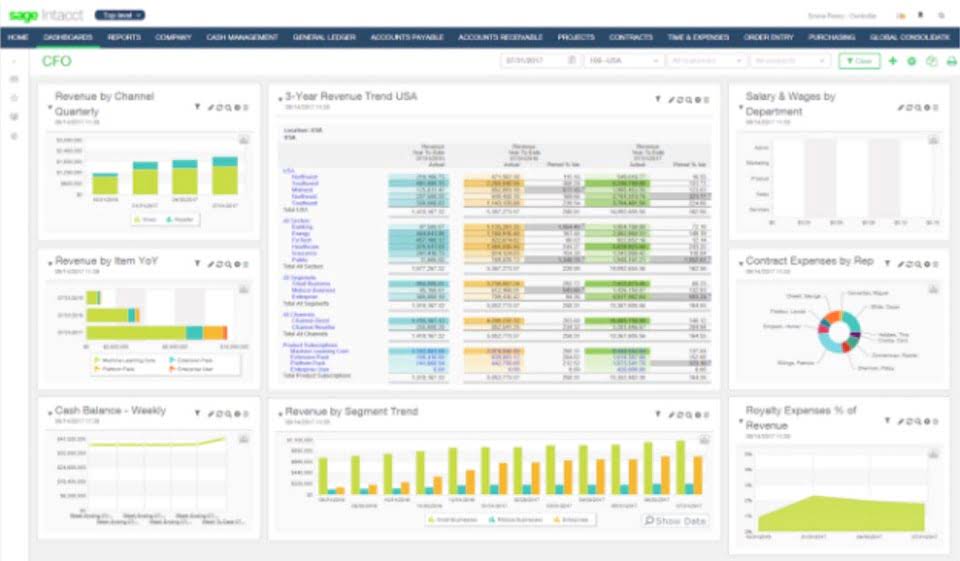
As we’ve discussed, it serves as the backbone of a firm’s bookkeeping system, faithfully recording every monetary transaction that occurs. And with the right accounting software and bookkeeping assistance, keeping your general ledger in good order doesn’t have to be an insurmountable task. Journals and accounting ledgers may be mistaken for each other but they serve different purposes.
Separate general ledger income accounts

A budget helps you set expectations regarding cash flow and expenses for the year—reducing the likelihood of missing a payment or bouncing a check. But setting up your finances properly won’t just make it easier to file your taxes each year—it’ll save you time, money, stress, and potentially legal trouble. In this sample chart of accounts, the code is a number, but could be any appropriate system which allows accounts to be grouped together.
General Ledger in Accounting: What Every Law Firm Needs to Know
In this sample chart of accounts template the sub-group column online bookkeeping divides each group into the categories shown in the listings below. The purpose of the sub-group is to categorize each account into classifications that you might need to present the balance sheet and income statement in accounting reports. Modern accounting technology offers powerful tools specifically designed for law firms. The ideal system should integrate time tracking, billing, and accounting functions, providing real-time financial insights. Leverage accounting software designed for law firms that can integrate seamlessly with practice management tools. Modern solutions offer customizable Chart of Accounts templates specifically tailored for legal practices.
Chart of Accounts

This means that how well the business does financially can have a direct effect on how much the equity partners or owners make. Because of this, equity ownership can affect how the company handles its money and what methods it uses to grow and make money. For law firms, the most common types of liabilities include accounts payable, accrued expenses, and payroll liabilities. Discover how law firms can effectively manage finances, ensure law firm chart of accounts compliance, and enhance financial awareness through the power of general ledgers with our comprehensive guide.
- Otherwise, you risk real financial complications that will set your company up for failure.
- Most of the time, the equity partners or shareholders share the firm’s gains and losses based on how much they own of the business.
- The best thing about a general ledger is its ability to provide a comprehensive view of a company’s financial state, allowing stakeholders to make informed decisions.
- An example specific to law firms would be the sub-account of segregated liabilities.
- It follows the accounting equation format, with assets listed on the left side and liabilities and stockholders’ equity listed on the right side.
Cash Flow Statement
The goal is to create an accounting system that can adapt to your firm’s evolving needs while maintaining core consistency and reliability. Schedule periodic reviews of your Chart of Accounts to ensure it remains aligned with your firm’s current operational needs. Imagine it as a detailed ledger where every expense, revenue source, and asset is categorized. Whether it’s the deposit you’ve received for a new case, the cost of new office equipment, or the revenue from a successful settlement, everything gets neatly filed under the right account.
But rules vary by state, so consult your State Bar Association and a professional accountant before finalizing your accounting setup. To open any business bank account, your practice needs to be registered with the state in which you are operating, have a registered business name, and have an Employer Identification Number (EIN). Before meeting with a bank representative, call ahead and ask what paperwork you need to bring to your initial appointment. If your business prefers to invoice the customer for their deposit rather than receiving it then and there, you can do that as well. The steps are the same as above except that you’ll make an invoice instead, and you won’t select a Deposit To account right away.
You should ask yourself, what do I want to track in my business and how do I want to organize this information? For example, we often suggest our clients break down their sales by revenue stream rather than just lumping all sales in a Revenue category. By doing so, you can easily understand what products or services are generating the most revenue in your business. If you create too many categories in your chart of account, you can make your entire financial reports difficult to read and analyze. Think of it as the master record of all your firm’s financial transactions, kept in a ledger, given the strict regulatory requirements and ethical considerations.
- It is basically a listing of all the accounts found in the general ledger that the business will use to code each bookkeeping transaction.
- However, this method does not recognize accounts receivable or accounts payable.
- Accurate accounting is crucial for business success, and by understanding the major accounts, companies can take steps to improve their financial health and achieve their goals.
- Using law firm management software with robust accounting capabilities can also automate the double-entry bookkeeping process involved in managing general ledgers.
- It also allows the customization of accounts to fit each firm’s unique needs, ensuring that complex transactions like client trust funds or partner distributions are correctly classified.
- A properly structured chart of accounts is crucial for accurate financial reporting and helps maintain regulatory compliance.
Long term liabilities

It is the easiest and most organized way to manage your law firm, clients, cases, billing, accounting and more. Accrual accounting records revenues and expenses when earned and incurred, regardless of when the money is received or paid. The purpose of the code is simply to group similar accounts together, and to provide an easy method real estate cash flow of referring to an account when preparing journal entries. When allocating account codes (chart of accounts numbers) don’t forget to leave space for additional accounts and codes to be inserted in a group at a later stage. For example the inventory codes run from 400 to 499 so there is plenty of room to incorporate new categories of inventory if needed. While maintaining a consistent accounting structure, allow for some flexibility to accommodate the dynamic nature of legal practice.
